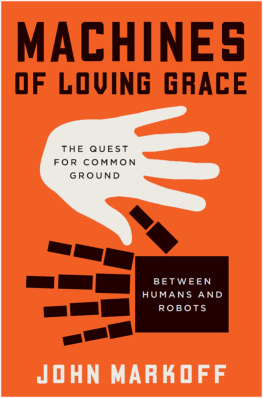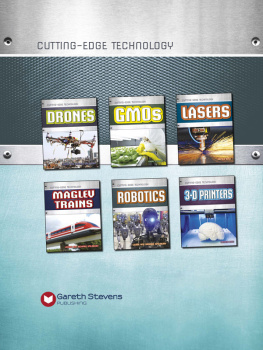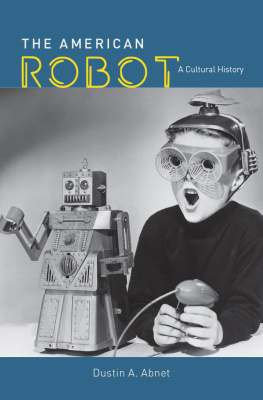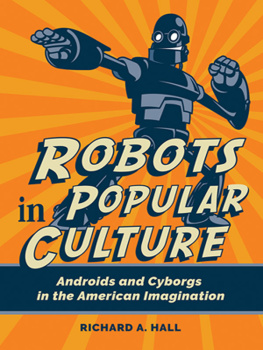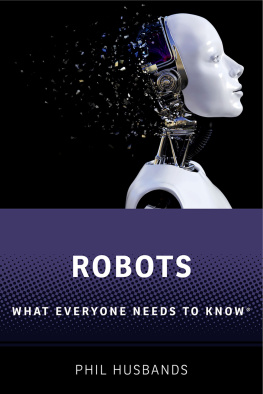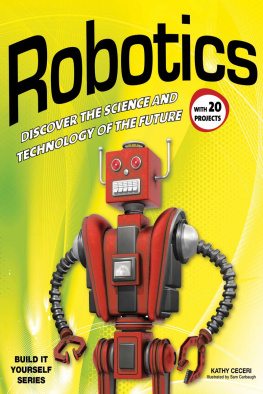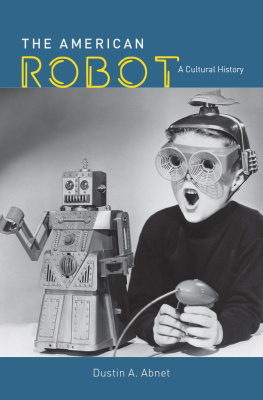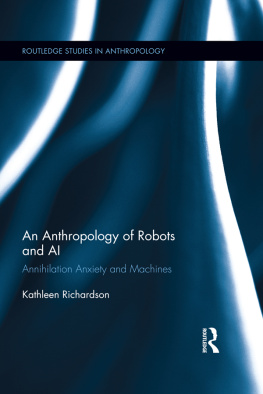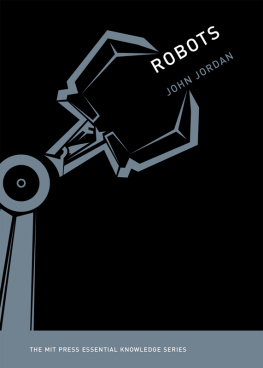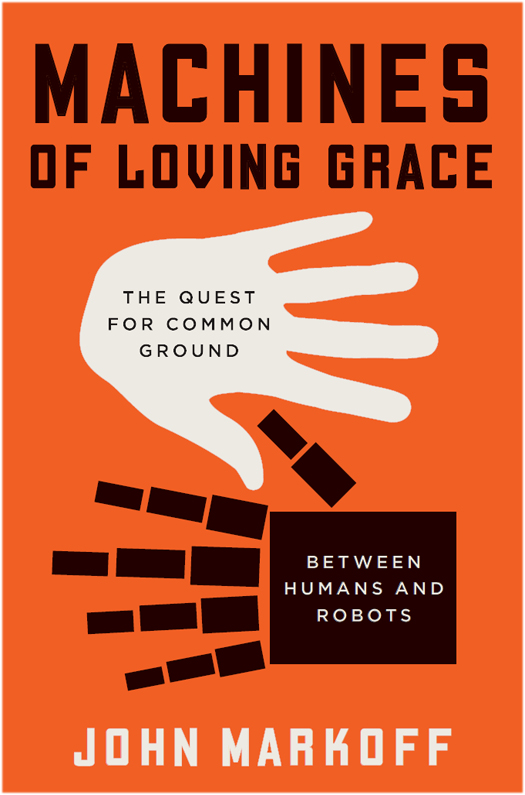I like to think
(it has to be!)
of a cybernetic ecology
where we are free of our labors
and joined back to nature,
returned to our mammal
brothers and sisters,
and all watched over
by machines of loving grace.
Richard Brautigan,
All Watched Over by Machines of Loving Grace
CONTENTS
Guide
I n the spring of 2014 I parked in front of the small caf adjacent to the Stanford Golf Course. As I got out of my car, a woman pulled her Tesla into the next space, got out, and unloaded her golf cart. She then turned and walked toward the golf course and her golf cart followed heron its own. I was stunned, but when I feverishly Googled robot golf carts I found that there was nothing new about the caddy. The CaddyTrek robot golf cart, which retails at $1,795, is simply one of many luxury items that you might find on a Silicon Valley golf course these days.
Robots are pervading our daily lives. Cheap sensors, powerful computers, and artificial intelligence software will ensure they will, increasingly, be autonomous. They will assist us and they will replace us. They will transform health care and elder care as they have transformed warfare. Yet despite the fact that these machines have been a part of our literature and cinema for decades, we are ill-prepared for this new world now in the making.
The idea that led to this book has its roots in the years between 1999 and 2001, when I was conducting a series of interviews that would ultimately become the book What the Dormouse Said: How the Sixties Counterculture Shaped the Personal Computer Industry. My original research was an exercise in anti-autobiography. I grew up in Palo Altoa city that would become the heart of Silicon Valleyin the 1950s and the first half of the 1960s, but I moved away during a crucial decade when a set of computing and communications technologies combined to lay the foundation for personal computing and the modern Internet. I returned just in time to see the emergence of a computing era that would soon sweep through the entire world, transforming everything it touched. Years later while I was doing research for Dormouse I noted a striking contrast in the intent of the designers of the original interactive computer systems. At the outset of the Information Age two researchers independently set out to invent the future of computing. They established research laboratories roughly equidistant from the Stanford University campus. In 1964 John McCarthy, a mathematician and computer scientist who had coined the term artificial intelligence, began designing a set of technologies that were intended to simulate human capabilities, a project he believed could be completed in just a decade. At the same time, on the other side of campus, Douglas Engelbart, who was a dreamer intent on using his expertise to improve the world, believed that computers should be used to augment or extend human capabilities, rather than to mimic or replace them. He set out to create a system to permit small groups of knowledge workers to quickly amplify their intellectual powers and work collaboratively. One researcher attempted to replace human beings with intelligent machines, while the other aimed to extend human capabilities. Of course, together, their work defined both a dichotomy and a paradox. The paradox is that the same technologies that extend the intellectual power of humans can displace them as well.
In this book, I have attempted to capture the ways in which scientists, engineers, and hackers have grappled with questions about the deepening relationship between human and machine. In some cases I discovered that the designers resist thinking deeply about the paradoxical relationship between artificial intelligence and intelligence augmentation. Often, it comes down to a simple matter of economics. There is now a burgeoning demand for robots with abilities that far exceed those of the early industrial robots of the last half century. Even in already highly automated industries like agriculture, a new wave of ag robots are now driving tractors and harvesters, irrigating and weeding fields, conducting surveillance from the air, and generally increasing farm productivity.
There are also many instances where the researchers think deeply about the paradox, and many of those researchers place themselves squarely in Engelbarts camp. Eric Horvitz, for example, is a Microsoft artificial intelligence researcher, medical doctor, and past president of the Association for the Advancement of Artificial Intelligence, who has for decades worked on systems to extend human capabilities in the office. He has designed elaborate robots that serve as office secretaries, performing tasks like tracking calendars, greeting visitors, and managing interruptions and distractions. He is building machines that will simultaneously augment and displace humans.
Others, like German-born Sebastian Thrun, an artificial intelligence researcher and a roboticist (also a cofounder at Udacity, an online education company) are building a world that will be full of autonomous machines. As founder of the Google car project, Thrun led the design of autonomous vehicle technology that one day may displace millions of human drivers, something he justifies by citing the lives it will save and the injuries it will avoid.
The central topic of this book is the dichotomy and the paradox inherent in the work of the designers who alternatively augment and replace humans in the systems they build. This distinction is clearest in the contrasting philosophies of Andy Rubin and Tom Gruber. Rubin was the original architect of Googles robot empire and Gruber is a key designer of Apples Siri intelligent assistant. They are both among Silicon Valleys best and brightest, and their work builds on that of their predecessorsRubin mirrors John McCarthy and Gruber follows Doug Engelbartto alternatively replace or augment humans.
Today, both robotics and artificial intelligence software increasingly evoke memories of the early days of personal computing. Like the hobbyists who created the personal computer industry, AI designers and roboticists are hugely enthusiastic about the technological advances, new products, and companies clearly ahead of them. At the same time, many of the software designers and robot engineers grow uncomfortable when asked about the potential consequences of their inventions and frequently deflect questions with gallows humor. Yet questions are essential. Theres no blind watchmaker for the evolution of machines. Whether we augment or automate is a design decision that will be made by individual human designers.
It would be easy to cast one group as heroes and the other as villains, yet the consequences are too nuanced to be easily sorted into black and white categories. Between their twin visions of artificial intelligence and robotics lies a future that might move toward a utopia, a dystopia, or somewhere in between. Is an improved standard of living and relief from drudgery worthwhile if it also means giving up freedom and privacy? Is there a right or a wrong way to design these systems? The answer, I believe, lies with the designers themselves. One group designs powerful machines that allow humans to perform previously unthinkable tasks, like programming robots for space exploration, while the other works to replace humans with machines, like the developers of artificial intelligence software that enables robots to perform the work of doctors and lawyers. It is essential that these two camps find a way to communicate with each other. How we design and interact with our increasingly autonomous machines will determine the nature of our society and our economy. It will increasingly determine every aspect of our modern world, from whether we live in a more or less stratified society to what it will mean to be human.

